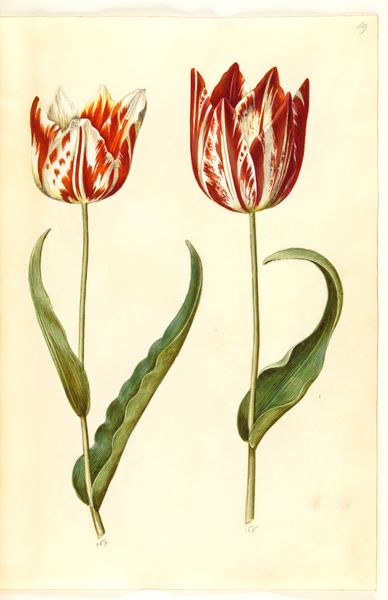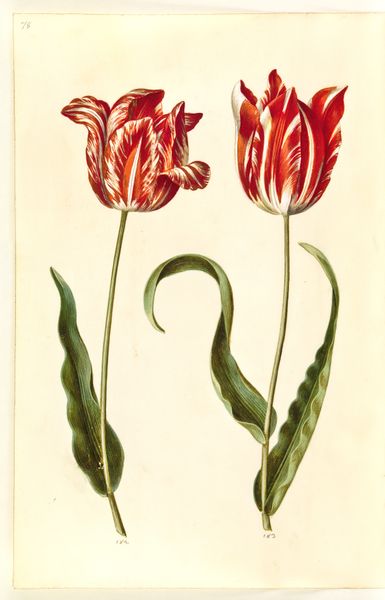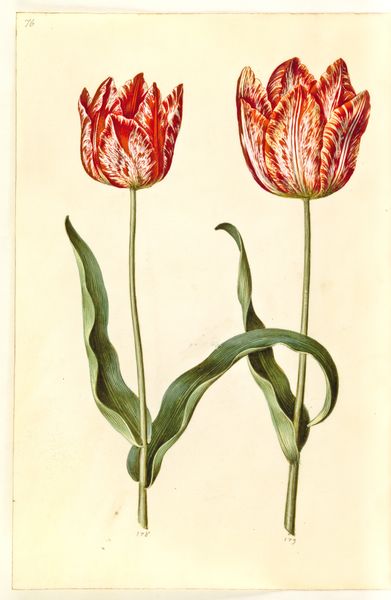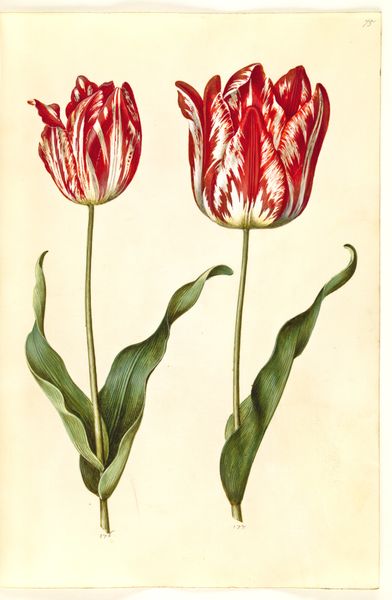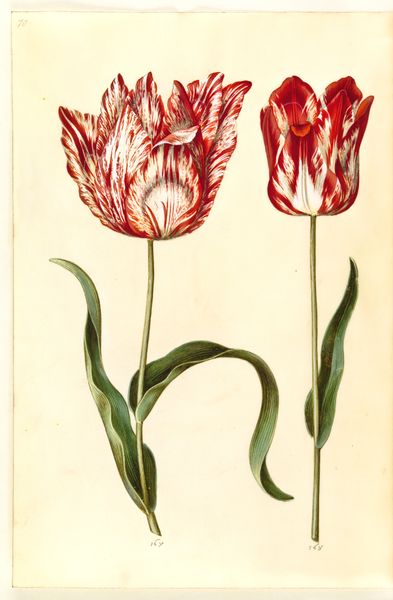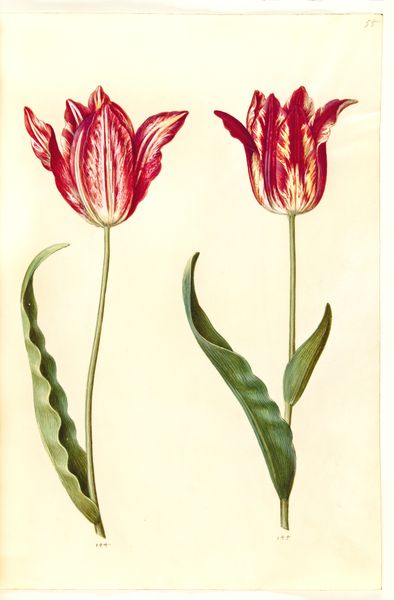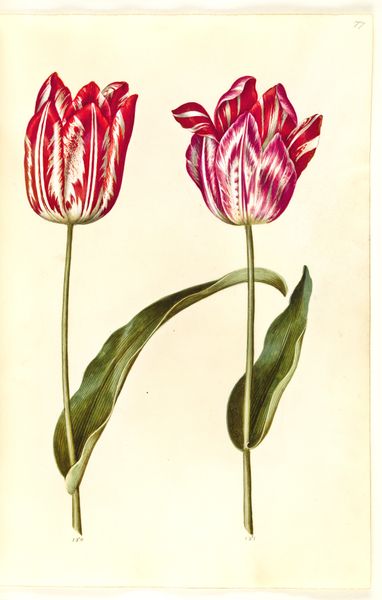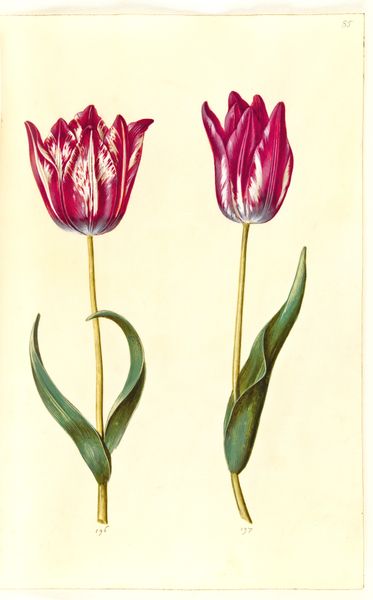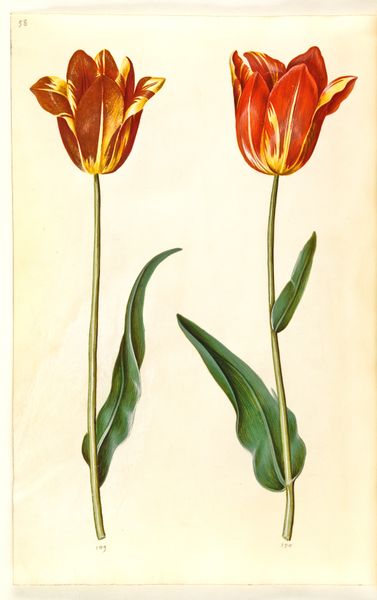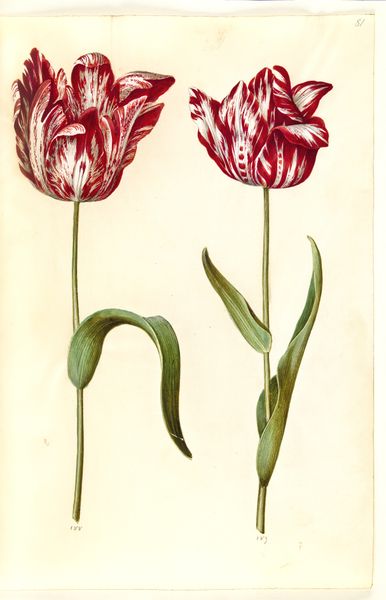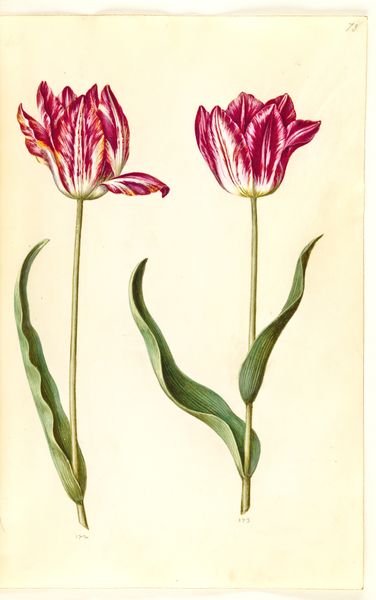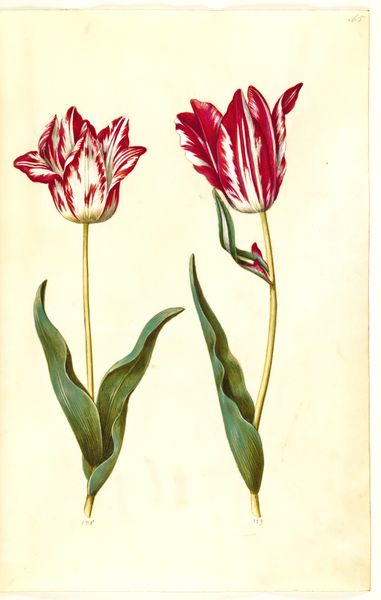
drawing, painting, gouache
#
drawing
#
dutch-golden-age
#
painting
#
gouache
#
food illustration
#
botanical art
Dimensions: 375 mm (height) x 265 mm (width) x 85 mm (depth) (monteringsmaal), 358 mm (height) x 250 mm (width) (bladmaal)
Curator: At the SMK, we have this arresting botanical illustration entitled "Tulipa gesneriana (have-tulipan)," attributed to Hans Simon Holtzbecker. It was made sometime between 1635 and 1664. Editor: It's a surprisingly evocative piece, considering it's just flowers. Those fiery colours against the creamy background feel both luxurious and a bit… precarious. Curator: Indeed. The image showcases two tulip varieties, meticulously rendered in gouache, likely as a study or record. Considering the Dutch Golden Age context, these weren’t just any flowers. They were symbols of wealth, commodities traded and speculated on. Editor: That makes perfect sense, knowing what tulips signified back then. I see now a starker parallel to current consumption and economic bubbles, especially concerning access to resources like land. Were depictions like this also instruments of propaganda for tulip mania? Curator: It’s difficult to say if this drawing itself directly participated in that speculative frenzy. But certainly it documents the materials being sought after. Botanical art often straddles science and aesthetics. Note the precision of the linework and the detail afforded to variegated petals, likely capturing rare "broken" varieties caused by a virus, but prized for their patterns. The paper is just as integral as it creates the neutral space for Holtzbecker’s botanical specimens to occupy the sheet. Editor: So, more of a "trophy" for display and archival documentation... There's something unsettling about rendering organic life so formally. I find it challenging to disassociate art from historical power dynamics. It highlights the violence of categorization, commodification, and the ongoing ecological consequences. Curator: I appreciate you highlighting these connections. Certainly, it is difficult to imagine the resources—materials, labor, expertise—that went into its creation. Even this work of natural history offers pathways to understand culture. Editor: Agreed. I look at this botanical study, now, as not just flowers but a complex nexus of class, ecological exploitation, and speculative finance frozen in pigment. Curator: Seeing the tulips in this way helps me see the true value of these materialist concerns. Thank you for this revealing reading!
Comments
No comments
Be the first to comment and join the conversation on the ultimate creative platform.
